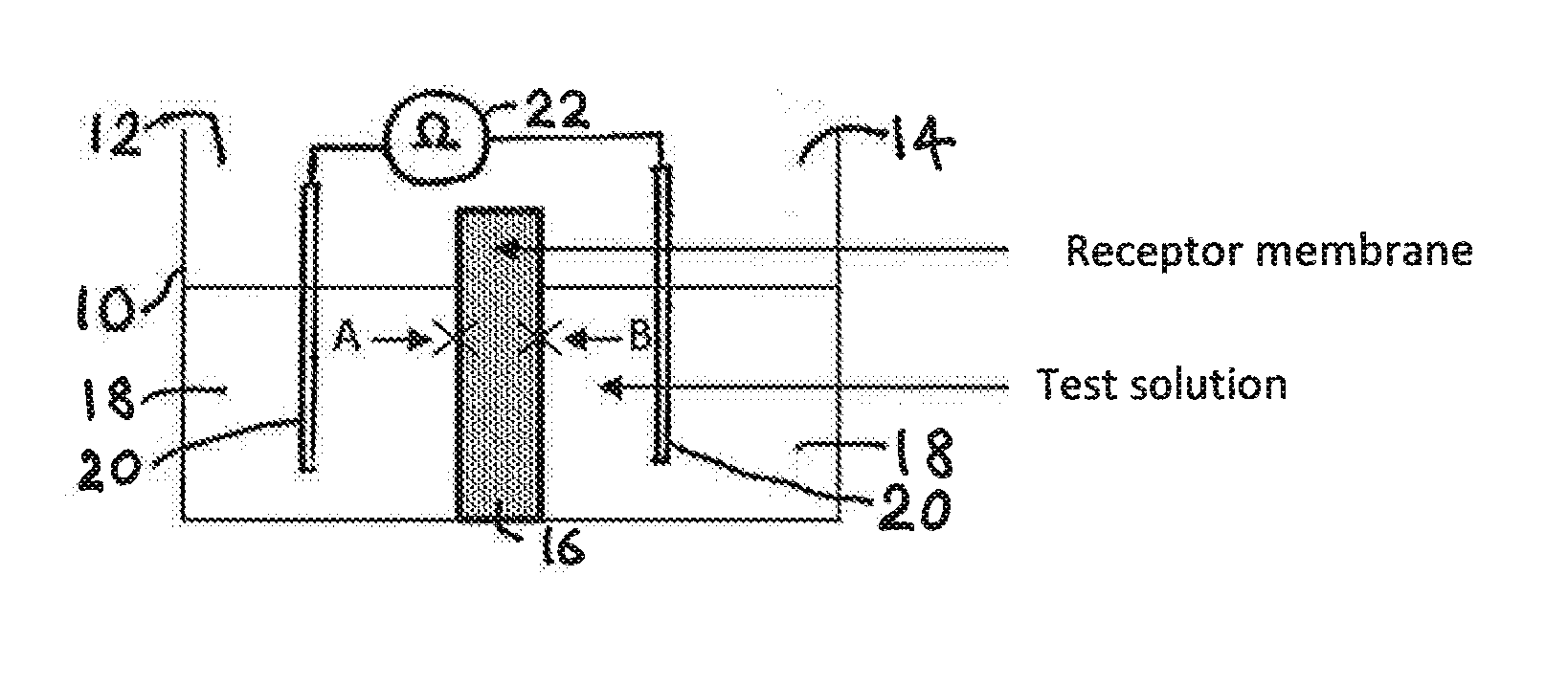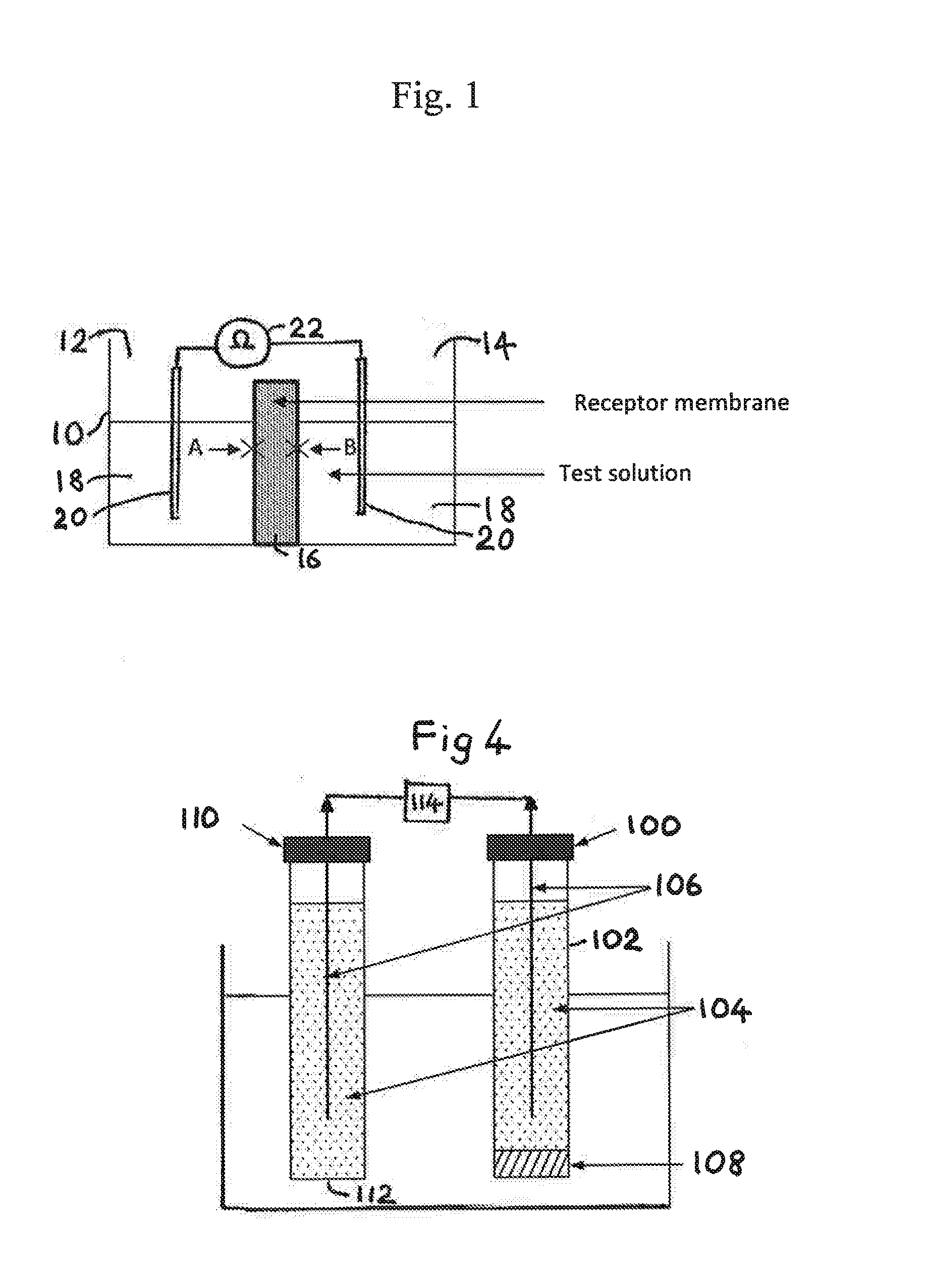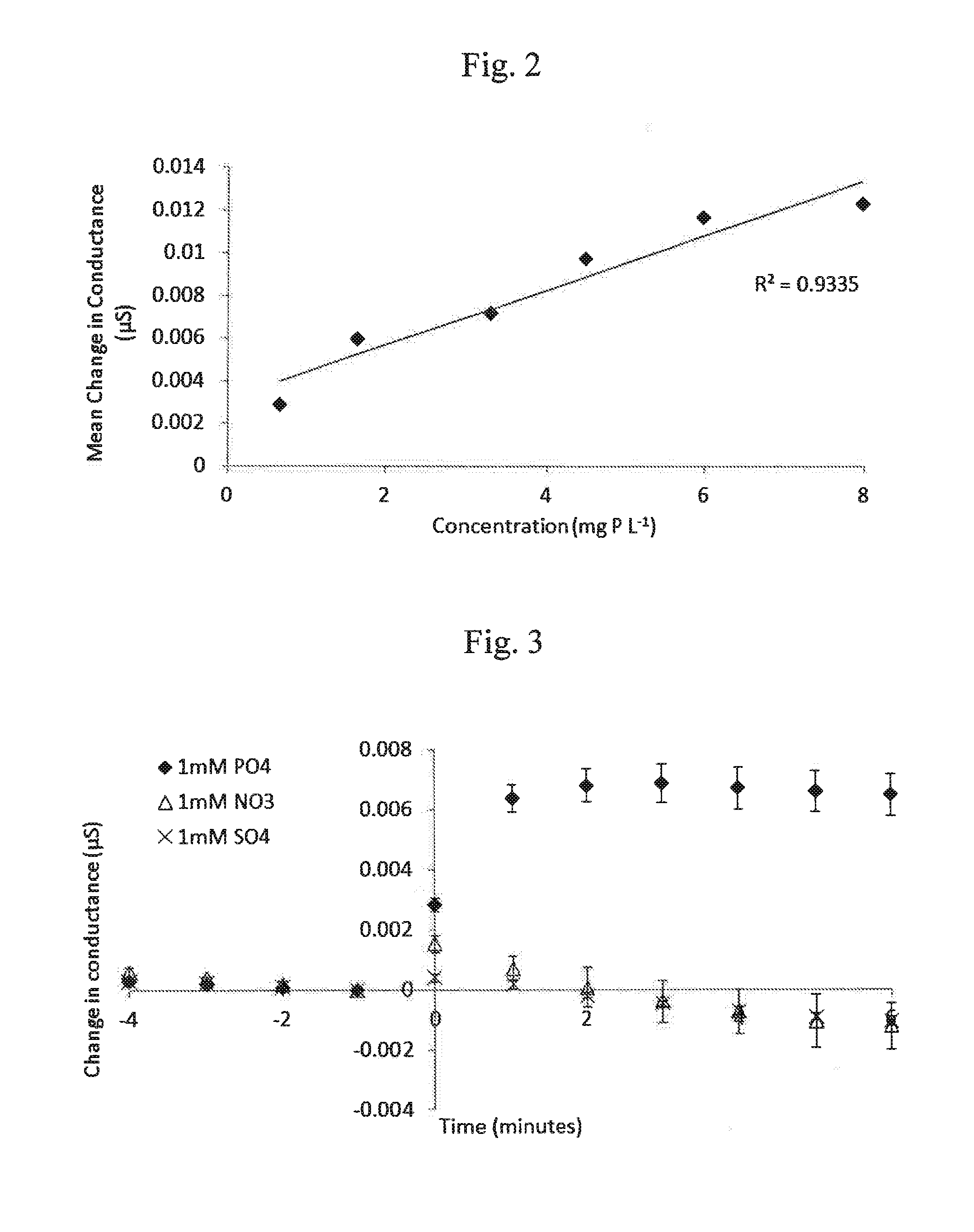Phosphate sensor, its use and its method of preparation
a phosphate sensor and sensor technology, applied in the field of phosphate sensors, can solve the problems of reduced water quality, reduced water quality, and expensive methods, and achieve the effects of cost saving, cost saving, and convenient and reliable approach
- Summary
- Abstract
- Description
- Claims
- Application Information
AI Technical Summary
Benefits of technology
Problems solved by technology
Method used
Image
Examples
Embodiment Construction
[0030]The procedure for manufacturing a first embodiment of the sensor is as follows.
Outline
[0031]A receptor membrane is prepared by combining a template molecule, which comprises a residue which is a structural analogue of phosphate; one or more functional monomers, such as vinyl monomers, allyl monomers, acetylenes, acrylates, methacrylates, or derivatives of amino acids, nucleosides, nucleotides and carbohydrates; a mixture of cross linking reagents to provide a combination of rigidity and flexibility, for example, ethylene glycol dimethacrylate, methylene bisacrylamide or N,N′-bisacryloylpiperazine; together with a solvent, for example dimethylformamide (DMF) or acetonitrile (ACN) and a polymerisation initiator, preferably azobis-cyclohexanecarbonitrile. The polymerisation mixture is polymerised, suitably under UV. The template is then removed from the polymer membrane.
[0032]A section of the receptor membrane is positioned between two, or more, electrodes, positioned a fixed dis...
PUM
| Property | Measurement | Unit |
|---|---|---|
| Electrical resistance | aaaaa | aaaaa |
| Electrical conductance | aaaaa | aaaaa |
Abstract
Description
Claims
Application Information
 Login to View More
Login to View More - R&D
- Intellectual Property
- Life Sciences
- Materials
- Tech Scout
- Unparalleled Data Quality
- Higher Quality Content
- 60% Fewer Hallucinations
Browse by: Latest US Patents, China's latest patents, Technical Efficacy Thesaurus, Application Domain, Technology Topic, Popular Technical Reports.
© 2025 PatSnap. All rights reserved.Legal|Privacy policy|Modern Slavery Act Transparency Statement|Sitemap|About US| Contact US: help@patsnap.com



